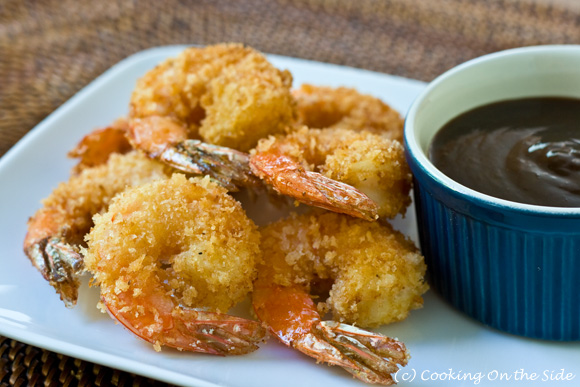This comes from
http://www.chow.com/ . Enjoy these wonderful, edible holiday gift ideas. Simple and Tastey!
Caramel Corn Recipe
Difficulty: Easy
Total Time: 15 mins, plus 1 hr baking time
Makes:15 cups
This easy treat—popcorn slathered with buttery caramel—had the CHOW staffers lurking around the test kitchen awaiting the next batch. The caramel corn will last up to a week, making it the perfect gift to package and mail during the holidays.
Game plan: If you’re popping your popcorn on the stovetop, place 1/4 cup vegetable oil in a large pot with a tightfitting lid over medium heat. When the oil shimmers, add 1/2 cup popcorn kernels, cover, and shake to evenly distribute. Once the kernels start popping, gently shake the pot until the popping dies down, about 2 to 3 minutes.
.
INGREDIENTS•15 cups popped plain popcorn (from about 1/2 cup kernels)
•1 1/2 cups packed dark brown sugar
•12 tablespoons unsalted butter (1 1/2 sticks), cut into 6 pieces, plus more for coating the pan
•1/4 cup plus 2 tablespoons light corn syrup
•1 teaspoon fine salt
•1 teaspoon vanilla extract
•1/2 teaspoon baking soda
INSTRUCTIONS1. Heat the oven to 250°F and arrange a rack in the middle. Coat a large roasting pan with butter and place the popcorn in the pan; set aside.
2. Place the brown sugar, butter, corn syrup, and salt in a medium heavy-bottomed saucepan over medium heat and bring to a boil, stirring occasionally with a rubber spatula until the sugar has dissolved, about 5 minutes. Continue to boil without stirring for 3 minutes.
Remove from heat, add the vanilla and baking soda, and whisk until the caramel is light in color, foamy, and has doubled in volume, about 10 seconds.
Immediately drizzle over the popcorn, stir with a rubber spatula until thoroughly coated, and spread into an even layer.
3. Bake, stirring every 15 minutes with a rubber spatula and scraping up any caramel from the bottom of the pan, until a cooled piece of popcorn is very crunchy, about 45 minutes to 1 hour total. (To test for doneness, take a few pieces of popcorn out of the oven and let cool for 30 seconds. If they’re crunchy, then the caramel corn is done.)
4. Transfer the caramel corn to a work surface or rimmed baking sheet to cool completely (it will crisp as it cools). Store in an airtight container at room temperature for up to 1 week.
Spiced Preserved Lemons Recipe
Difficulty: Easy
Total Time: 30 mins, plus soaking and fermentation time
Active Time: 20 mins
Makes:1 quart
Preserved lemons add tang and saltiness to many Mediterranean dishes. Try them in our Preserved Lemon and Bitters Vinaigrette, Vegetable Tagine, or Moroccan Charmoula Dressing.
What to buy: Look for lemons that don’t have any wax on the outside—organic lemons tend to be unwaxed. If you can only find conventional lemons, wash them briefly under very hot water to remove any wax.
Special equipment: You will need a resealable quart jar, a band, and a new lid for storing the lemons. A wide-mouth canning jar works best.
Game plan: You’ll need to begin this recipe the night before, by soaking the lemons.
INGREDIENTS•10 medium lemons (preferably organic, without a wax coating)
•3/4 cup kosher salt
•3 bay leaves
•2 (4-inch) cinnamon sticks
•1 teaspoon whole allspice
•1 teaspoon whole cloves
•1 teaspoon whole coriander
INSTRUCTIONS1. Soak the lemons in cold water overnight, weighing them down with a plate or plastic bag filled with water. Drain and dry the lemons with a towel.
2. Bring a large pot of water to a boil over high heat (the pot needs to be deep enough so the water covers the 1-quart jar). Place the clean, wide-mouth quart jar, band, and lid in the water and lower the heat to a simmer. Simmer for 10 minutes, then turn the heat off, leaving the jar in the water until ready to use. Remove the band and lid and dry with a clean towel; set aside.
3. Working over a medium bowl, take 7 of the lemons and make 4 equally spaced lengthwise slits in each, starting about 1/2 inch below the stem and ending about 1/2 inch above the base. Cut through the skin, stopping at the center of the lemon. Squeeze each lemon gently from top to bottom so the slits pop open, then sprinkle the interior with 1 heaping tablespoon of the salt, making sure the salt gets into the center. Let any excess salt or lemon juice fall into the bowl.
4. Remove the jar from the pot and shake out any excess water; set aside. Add the remaining salt and the spices to the bowl and stir to combine. Drop some of the salt-spice mixture into the jar and add the lemons one at a time, compacting each with a wooden spoon until it releases its juice and is packed very tightly. Alternate layers of the salt-spice mixture and lemons, adding all of the mixture and stopping when you reach the shoulder of the jar. If the lemons are not completely covered with their own juices, squeeze the juice from the 3 remaining lemons and pour it into the jar. Seal the jar and place it in a warm, bright spot.
5. Once a day for the first week, shake the jar and carefully open it over the sink to let out any excess gas. After the first week, the fermentation will slow and you’ll only need to shake and “burp” the jar once every 7 days. After about a month, the liquid will clear and the lemons will be ready to use. They will keep for up to 2 months in the refrigerator.
Chocolate-Dipped Salted Caramels RecipeDifficulty: Medium
Total Time: 2 hrs, plus cooling time
Makes:About 85 caramels
We can’t get enough of these salty-sweet treats. Make a batch, put them in small candy boxes, and your holiday shopping is complete.
Special equipment: For coating the caramels in chocolate, you’ll need a kitchen scale and a chocolate thermometer such as CDN’s.
What to buy: Professional pastry chefs use a type of chocolate known as couverture, which sets up nicely because it contains more cocoa butter than regular chocolate. The only trick is, you need to temper it. For this recipe, we used El Rey 58.5 percent dark chocolate Discos; they can be found at many specialty grocery stores or online.
Game plan: The caramels can be made ahead of time and stored in an airtight container until ready to coat.
In our experience, it’s best to avoid tempering chocolate on a hot day or to work in an air-conditioned space. Chocolate behaves best at a room temperature between the mid-60s and low 70s. Also, chocolate stays in temper for only a short time, so have everything ready to go and work quickly.
Once coated, the chocolate caramels will keep for 2 weeks in the refrigerator.
INGREDIENTS•1 1/2 cups heavy cream
•1 1/3 cups granulated sugar
•1/2 cup light corn syrup
•1/2 cup packed dark brown sugar
•6 tablespoons unsalted butter (3/4 stick), cut into pieces and at room temperature, plus more for coating the pan
•2 teaspoons vanilla extract
•3 1/2 teaspoons fleur de sel or other coarse sea salt
•1 1/2 pounds (24 ounces) bittersweet chocolate, coarsely chopped
INSTRUCTIONS1. Coat an 8-by-8-inch baking dish with butter. Cut a piece of parchment paper—it should be a little less than 8 inches wide and long enough so that it rides over two sides of the dish when pressed into it. Press the parchment paper flat into the baking dish, creasing the paper at the corners. Coat the parchment-lined pan with more butter and place it on a wire rack.
2. Place the cream in a large, heavy-bottomed saucepan over medium-high heat and bring to a boil, about 3 minutes. Stir in the sugar, corn syrup, and brown sugar and return to a boil, stirring constantly with a wooden spoon until the sugars have dissolved, about 3 minutes. Reduce the heat to medium and keep the mixture at a gently rolling boil, stirring occasionally, until it reaches 255°F on an instant-read thermometer, about 20 to 25 minutes. (It will reach 225°F very quickly but then very slowly rise toward 255°F.)
3. Remove the pan from heat, add the butter, vanilla, and 2 1/2 teaspoons of the fleur de sel, and stir until the butter has melted and the mixture is combined. Pour into the prepared dish and let cool until the surface of the caramel is set and the dish is only slightly warm, about 1 hour.
4. Place the dish in the freezer until the caramel is just firm, about 15 to 20 minutes (do not let it freeze for too long). Run a knife along the edges of the caramel. Using the exposed edges of parchment paper, pull the caramel slab from the pan, flip it over onto a work surface, and remove the parchment. Sprinkle with the remaining 1 teaspoon fleur de sel and press gently so that the salt adheres to the caramel. Line a baking sheet with parchment paper.
Cut into 3/4-inch squares.
Line a baking sheet with parchment paper. Transfer all of the caramels to the baking sheet (making sure they don’t touch) and place in the refrigerator to harden again.
5. Bring a medium saucepan filled with 1 to 2 inches of water to a simmer over high heat; once simmering, turn off the heat. Place 18 ounces of the chocolate in a dry, heatproof bowl. Set the bowl over the saucepan and, using a rubber spatula, stir until the chocolate has completely melted and has reached 118°F. (Make sure the chocolate does not come into contact with any water or exceed 120°F.)
6. Remove the bowl from the saucepan. Add the remaining 6 ounces chocolate and stir until all of the chocolate has melted and the temperature has cooled to 80°F. (To speed this step up, you can place the bowl of chocolate over a bowl of ice water—but only once all of the chocolate has melted.)
7. Once cooled, return the bowl of chocolate to the saucepan and stir until the chocolate reaches 88°F; immediately remove from heat. Do not remove the thermometer from the bowl; check the temperature periodically to make sure it stays between 87°F and 89°F. (The chocolate must remain in this temperature range while dipping the caramels or it will not set properly.) Keep the saucepan of water over low heat and, when needed, set the bowl of chocolate over it to reheat.
8. To test if the chocolate is properly tempered, spread a thin layer on a piece of parchment paper and place it in the refrigerator for 3 minutes to set. If the chocolate hardens smooth and without streaks, it is properly tempered. (If it is not properly tempered, let the melted chocolate harden and start the tempering process over again: Bring the chocolate up to 118°F, then down to 80°F, then up again to 88°F.)
9. Line a second baking sheet with parchment paper. Remove the caramels from the refrigerator. Drop a caramel into the chocolate and, using a dinner fork, turn it to coat. Lift it out of the chocolate and tap the fork several times on the edge of the bowl. Scrape the bottom of the fork against the edge of the bowl to remove any excess chocolate.
Place the coated caramel on the empty baking sheet. Repeat with the remaining caramels, using the first baking sheet when the second sheet is full and making sure the caramels do not touch. Let sit until the chocolate sets.
Store in an airtight container in the refrigerator for up to 2 weeks.
Palmiers RecipeDifficulty: Easy
Total Time: 1 hr 5 mins
Active Time: 20 mins
Makes:About 28 cookies
Made from thinly rolled puff pastry dough that’s been folded in finely ground sugar, palmiers rise into caramelized, crispy cookies. Store-bought puff pastry dough makes what is otherwise a time-consuming treat a cinch.
What to buy: Be sure to look for an all-butter puff pastry; the flavor is superior. You will find brands like Dufour in the freezer section of many specialty grocery stores, including Whole Foods. Avoid brands made with partially hydrogenated shortening.
We’ve written this recipe to accommodate puff pastry brands sold in both one and two sheets.
INGREDIENTS•1 cup granulated sugar
•1/2 teaspoon fine salt
•1 (14- to 16-ounce package) frozen puff pastry, thawed according to the package directions
INSTRUCTIONS1. Place sugar in the bowl of a food processor fitted with a blade attachment and process until fine, about 1 minute. Remove 1/4 cup of the sugar from the food processor and set aside for dipping the cookies in just before baking. Add salt to the remaining 3/4 cup sugar and pulse about 3 times to combine.
2. Sprinkle about half of the sugar-salt mixture onto your work surface to match the size of the puff pastry.
Place the puff pastry sheet(s) on the sugar mixture with one of the short ends closest to you and sprinkle the remaining sugar mixture evenly on top. If you’re using a single puff pastry sheet, roll the dough into a 1/8-inch-thick rectangle, sprinkling loose sugar from the work surface onto it as you roll. If you’re using two sheets, roll each to 1/8 inch thick (you will have two 9-inch squares), sprinkling loose sugar from the work surface onto the dough as you roll.
3. Fold the top third of the single sheet over the middle third, then fold the bottom third over the top and middle thirds, as if folding a business letter.
If you’re using two 9-inch square sheets, fold each in half.
4. Rotate the dough piece(s) so one of the short ends is closest to you. Sprinkle more loose sugar from the work surface on the dough. Roll the dough piece(s) out from left to right only (not top to bottom) to about 3/8 inch thick (between 6 to 8 inches wide). (It does not matter how long the dough is at this point.)
5. Determine the center line of the dough piece(s) running from top to bottom. Fold the left and right sides to the center line, so the two folds just touch in the center.
Fold one half lengthwise over the other (as if closing a book). You should now have one long piece (or two pieces) of dough about 2 inches wide. Gently run the rolling pin over the top of the dough piece(s) to press the layers together. Refrigerate until firm, about 30 minutes.
6. Meanwhile, heat the oven to 400°F and arrange a rack in the upper third. Line two baking sheets with parchment paper.
7. Cut half of the dough into 1/2-inch-thick slices crosswise (keep the remaining dough refrigerated).
Dip the slices on both sides in the reserved ground sugar.
Place the slices on one of the prepared baking sheets 1 1/2 inches apart; about 12 to 15 should fit.
Bake until the sugar around the edges of the palmiers just starts to caramelize, about 8 to 10 minutes. Remove the baking sheet from the oven and flip each palmier over with a spatula. The palmiers will spread; use the spatula to push them back together, being careful not to touch the hot sugar with your fingers.
8. Rotate the baking sheet and continue baking until the cookies are a deep golden brown, about 8 to 10 minutes more. Transfer the baking sheet to a wire rack to cool completely. Repeat cutting and baking with the remaining dough on the second baking sheet.




































































